When starting to plan the development of a new project, one important task for the project manager is to identify the roles and responsibilities required to deliver the project based upon the agreed scope. You also will need to have a clear understanding of the availability of the resources that play roles throughout the project lifecycle.
So it’s frustrating to discover during the execution of the project that a key member of the team isn’t available in the next week due to vacation — which was already planned more than six months ago. To avoid problems with the resources not being available to perform the tasks under their care, it’s important to manage information about resource availability, a job that can be handled in Microsoft Project.
Options to Manage Resources Availability
You have two options to manage resource availability in Project:
- Change their units (availability); or
- Change their working time (calendar).
We’ll use the example presented in the schedule below to make simulations and discuss the pros and cons for each option.
Changing the Resource’s Availability
When you change the availability of a resource in Microsoft Project, you are basically telling the software that during a specific period that person’s availability will be reduced. When making this change, it’s possible to identify the tasks assigned to this resource during the period of his or her unavailability because they’ll be marked with the “over-allocated” indicator.
Let’s say that you have been informed that the resource Walt Nickel will be on vacation from 11/02/2015 to 11/13/2015. Based on that information, you need to “inform” Project of Walt’s unavailability. Navigate to the Resource Sheet view. Then double-click the resource Walt Nickel to display the Resource Information dialog.
Look at the Resource Availability area. There you can configure the periods in which Walt isn’t available or in which his availability will be reduced. Change his availability as follows:
In the Available To field on the first line, type 11/01/2015, which is the last date for which Walt will have 100 percent of availability prior to his vacation.
On the second line, in the Available From field, type 11/02/2015, which is the starting date of his vacation. Then, in the Available To field, type 11/13/2015, which is the date Walt’s vacation ends. After that, in the Units field, type 0% to make Walt unavailable for this period.
On the third line, in the Available From field, type 11/14/2015, which is the date Walt will be fully available to work in the project again. In the Units field, type 100%.
Click OK.
You will instantly see that Project indicates that Walt is over-allocated, as the period of his vacation conflicts with some tasks that have been assigned to him:
There are many different ways you can see over-allocated resources in Project. In this example I switch to the “Resource Usage” view to see the tasks that were affected by Walt’s unavailability:
You can also view the over-allocation using the Team Planner or Resource Graph views, or through Project’s reports.
The positive side of changing the resource’s availability is that by understanding when and where the resource is unavailable, you can take proactive actions to reorganize the schedule (for example, reassigning tasks to other resources when possible), in order to reduce the impact in the project. On the other hand, you’ll also have to take care of the corrective actions manually; for big schedules this can be challenging.
Changing the Working Time
The second option for changing the resource’s availability is to configure the person’s working time. This option allows you to set restrictions to a resource’s calendar, creating nonworking time for a specific period. When using this approach, instead of informing you that the resource is over-allocated, Project will move the tasks along and assign them to the next date when the resource is available to work.
For example, let’s say you’ve been informed that the resource Nate Auchter will be on vacation from 10/13/2015 to 10/16/2015. Based on that, you need to tell Project of Nate’s unavailability. Navigate to the Resource Sheet view. Then, double-click the resource Nate Auchter to see the Resource Information dialog.
However, instead of changing Nate’s availability, let’s change his working time. Click the Change Working Time button. In the Change Working Time dialog, create an exception to Nate based on his vacation, as follows:
Click OK and OK.
You won’t see any signal of over-allocation for Nate. However, notice that a task assigned to him, “Interviews with Project Managers and key users” was changed automatically by Project, due to Nate’s unavailability. The task was previously scheduled from 10/13/2015 to 10/26/2015, and now it is scheduled from 10/19/2015 to 10/30/2015. Consequently, the schedule, which was planned originally to finish at 11/30/2015, is now finishing at 12/04/2015:
The positive side of changing the resource’s working time using this method is that Project will make the changes to reorganize the tasks automatically based upon the resource’s availability. However, sometimes it can be hard to understand where the changes have been made and how they impact the schedule.
Now that you know the two available options to control your resources availability, it’s up to you to decide which one best meets your needs.
Have another approach for handling resource availability? Share your ideas with the MPUG community in the comments below.
A version of this article first appeared on the Sensei Project Solutions blog.
[ezcol_1third]
FREE MPUG Resources
- Microsoft Project Tutorial
- Tips from a Microsoft Project MVP
- Webinar: Microsoft Project Do’s and Dont’s
- The Project Communication Plan
- Creating an Agile Schedule
- 15 Tips for New Users
- MPUG Newsletter
- Want access to more? Join MPUG Today!
[/ezcol_1third]
[ezcol_1third]
Microsoft Project Resources
- Microsoft Project User Group
- Online Training
- Microsoft’s Project Website
- Try Microsoft Project for FREE!
- Microsoft Project Certifications
[/ezcol_1third]
[ezcol_1third_end]
Additional Resources
[/ezcol_1third_end]


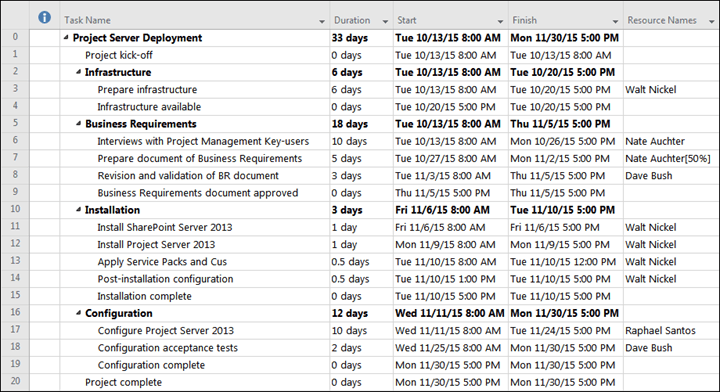
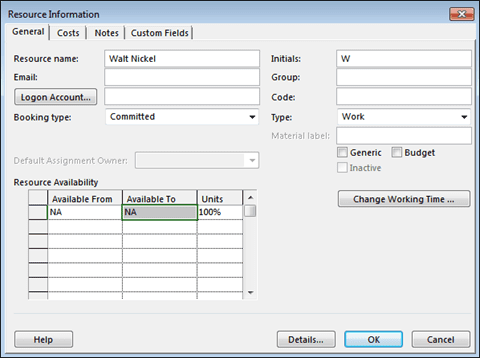
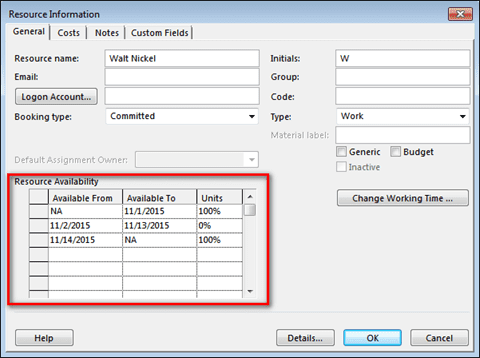


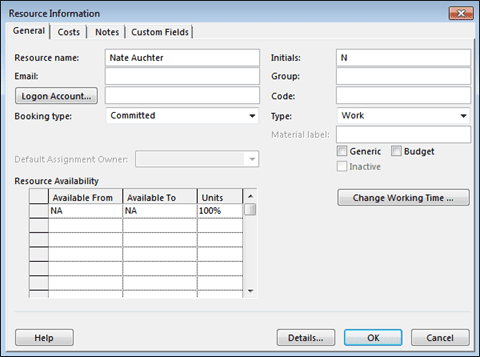
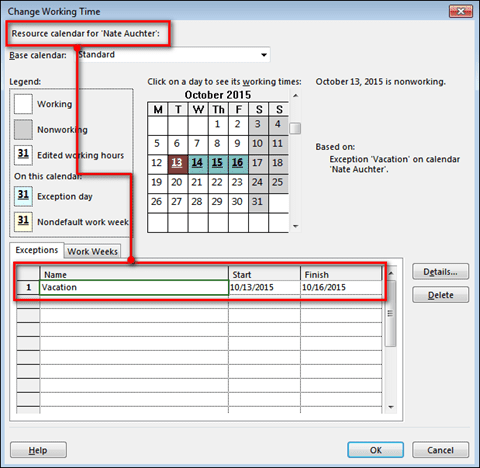
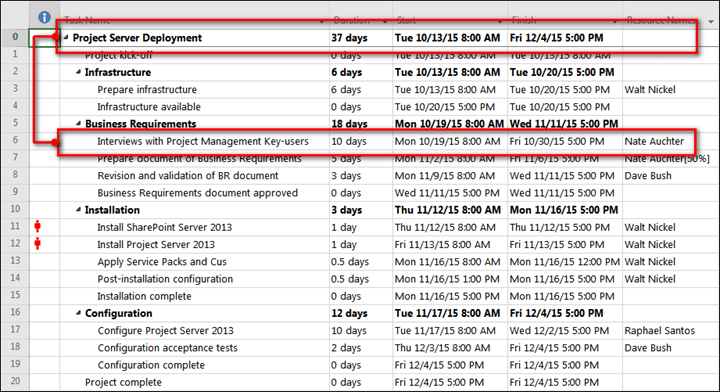





Shirin
Very helpful article. The first approach is very creative.
Raphael Santos
Hi Shirin —
Thank you for your comment.
Raphael
Chris R
Thanks Raphael. Nice article. Here is another approach. I like the “Change Working Time” option. Here’s why. The auto-scheduling of “missed days” make the replanning easier. If you need more visibility of resources with non-working days, try this. From the Gantt Chart View, right Click. Pick the “Non-Work Time…” option. Then from choices, select Highlight Color, Pattern, and most important, Resource Calendar of your target. Bang! You have a nice visual of days this resource is off work.
Raphael Santos
Hello Chris —
That’s an awesome addition to the article. Thanks for sharing this 🙂
Raphael Santos
Hi Viplav,
Material and Cost resource do not have availability, only Work resources.
I hope this helps.
Kevin Kovalic
I could have sworn that absences for ANY reason would not automatically reschedule the task. The reason being is that by auto rescheduling, Project doesn’t allow the PM to recognize the overallocation and choose a different option such as leave the task as is and reassign it. Did something in Project recently change this logic?